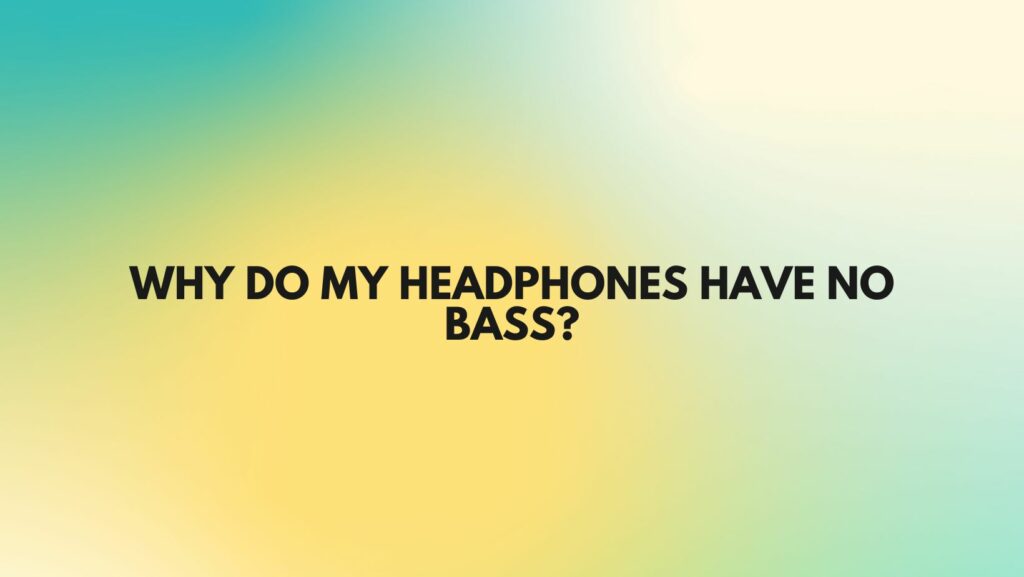Headphones have become an indispensable part of our daily lives, offering a personalized and immersive audio experience. However, if you’ve ever found yourself wondering why your headphones lack the punchy bass you crave, you’re not alone. The quest for optimal bass reproduction is a common concern among audio enthusiasts. In this article, we’ll delve into the various factors that can contribute to a lack of bass in headphones and explore potential solutions to enhance your listening experience.
- Headphone Design and Driver Size: One of the primary factors influencing bass reproduction is the design of your headphones and the size of their drivers. Smaller drivers may struggle to produce deep, resonant bass compared to larger counterparts. High-quality over-ear headphones generally have more significant drivers, allowing for better bass response. In-ear headphones, on the other hand, may face limitations due to their compact size.
- Seal and Fit: Achieving a proper seal between the headphones and your ears is crucial for optimal bass performance. If there’s any leakage of sound, the bass frequencies can be compromised. In-ear headphones, in particular, rely heavily on a snug fit within the ear canal to isolate external noise and maximize bass response. Ensure that your headphones’ ear tips or pads are appropriately sized and fit securely for the best results.
- Audio Source Quality: The quality of the audio source plays a significant role in the perceived bass output. Low-quality audio files or streaming services with compressed formats may limit the overall dynamic range, making it challenging for headphones to reproduce deep bass accurately. Consider upgrading your audio files to higher resolutions or opting for lossless formats to experience a fuller bass spectrum.
- Equalization (EQ) Settings: Most audio devices come with built-in equalizer settings that allow users to adjust the frequency response. Experimenting with your device’s EQ settings can be a game-changer in enhancing bass reproduction. Boosting lower frequencies can add the desired depth to your audio, but be cautious not to overemphasize, as it may result in distortion.
- Burn-In Period: Some headphones, particularly those with dynamic drivers, may benefit from a burn-in period. This involves playing music through the headphones for an extended period to allow the components to settle and optimize performance. While the impact of burn-in is debated among audiophiles, some users report an improvement in bass response over time.
- Audio Cable and Connectivity: The quality of your headphone cable and the type of connection can influence bass output. Check for any damaged cables and ensure a secure connection to your audio source. Upgrading to high-quality cables, especially if using detachable ones, may result in improved signal transmission and, consequently, better bass performance.
Conclusion: Understanding the factors contributing to a lack of bass in your headphones empowers you to take corrective measures and tailor your listening experience. Whether it’s optimizing fit, experimenting with EQ settings, or investing in higher-quality audio sources, addressing these elements can make a substantial difference. By unraveling the mystery behind your headphones’ bass deficiency, you can embark on a journey to rediscover the richness and depth of your favorite music.


